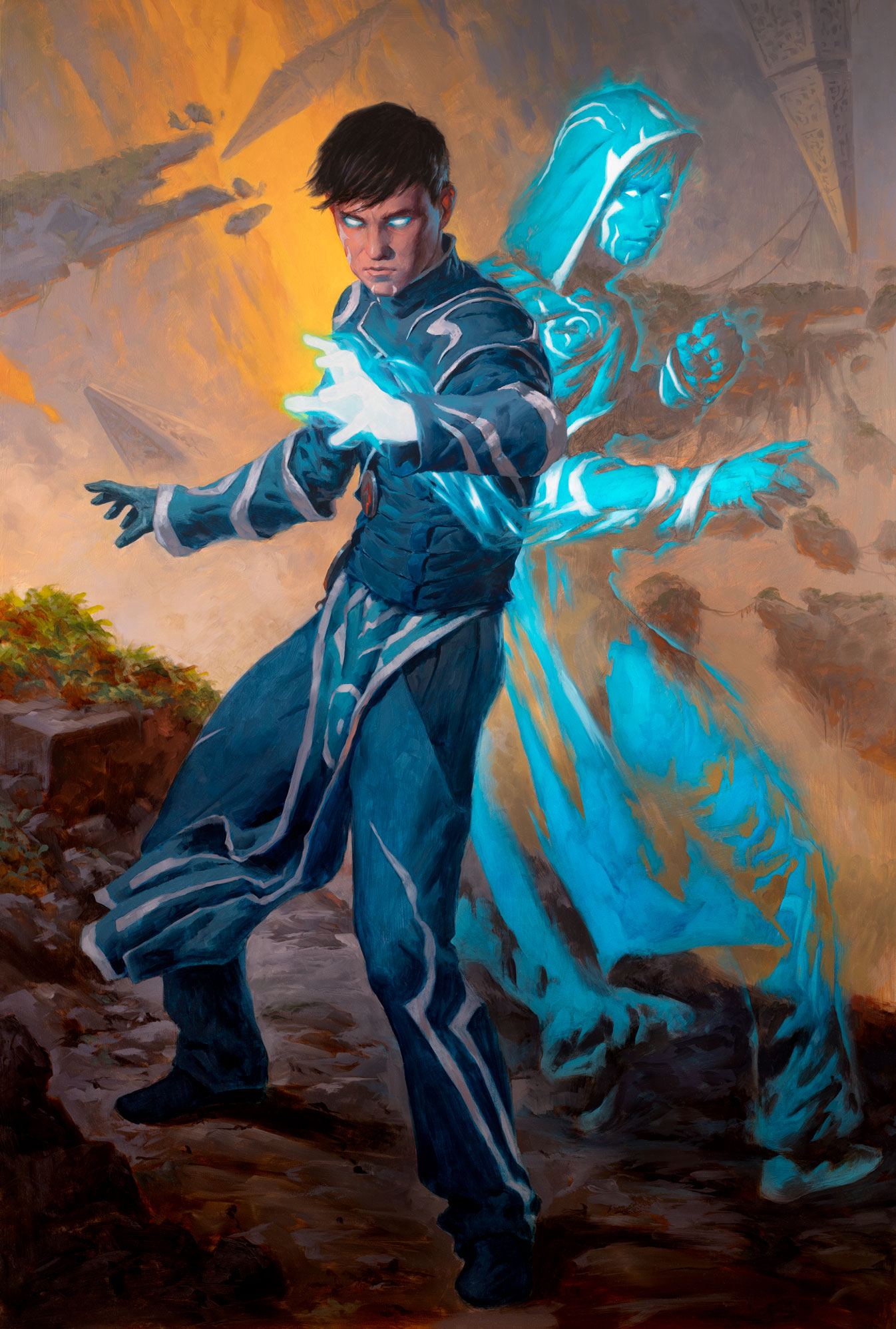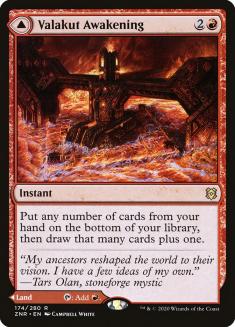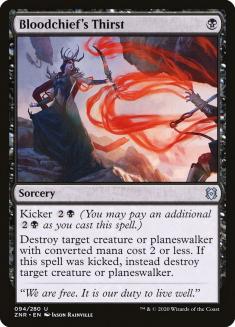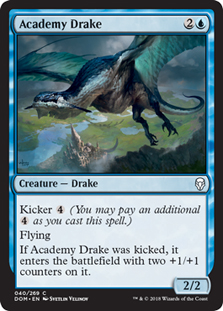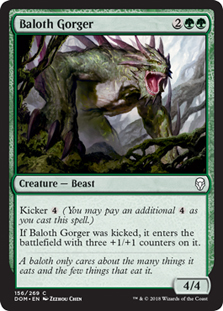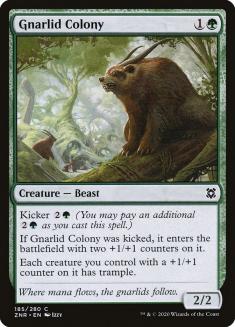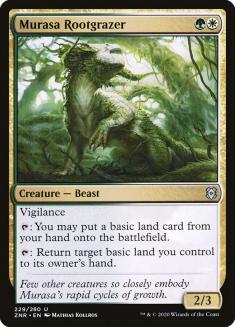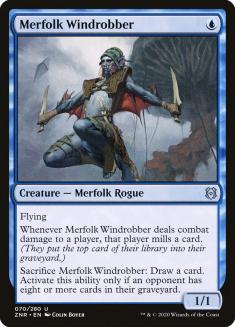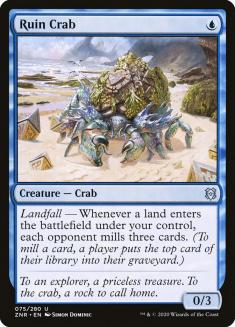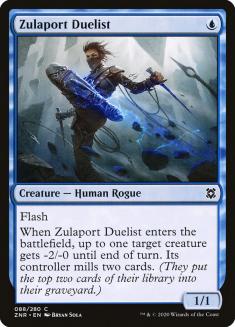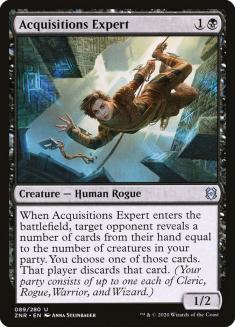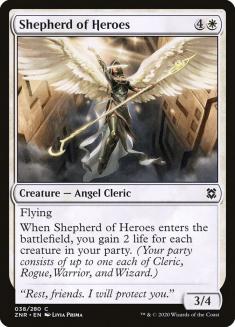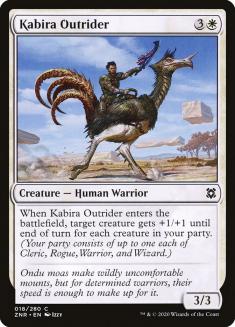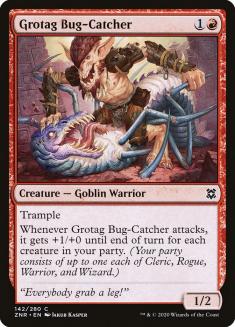I think the release of the fall set is my favorite time of the year for Magic. The summer often lacks excitement in Limited thanks to core sets having shorter shelf lives due to their simple natures. This has me itching for new and complicated archetypes and interactions. And given that I just took a summer-long break from Magic and content creation, I’m back with more excitement than ever!
This morning, on the Zendikar Rising preview show, the mechanics for Magic’s newest set were revealed. The returning mechanics are kicker and landfall, while the new mechanics are party and modal double-faced cards (DFCs). My goal today is to provide a framework for card evaluation given these mechanics, as well as insight on how these mechanics interact and what that may mean about the upcoming Limited format.
It’s important to remember how crucial context is for initial format evaluations and specifically that we only have minimal context at this time. Consider Shock from Core Set 2021. Shock is usually a solid common, but nothing special. However, this summer it was a top common. Speculating on the interaction between cards, archetypes, and mechanics can shed light on these types of context-dependent evaluations, and hence is a great way to gain an edge. And I believe these mechanics create a drastic shift in evaluation metrics.
There is a very explicit harmony between three out of four of these mechanics that will have a profound impact on the texture of Limited decks. Landfall, kicker, and modal DFCs all change the incentives around manabases.
Kicker provides scalable cards that get better with access to more mana. Landfall rewards players for playing lands every single turn, which naturally helps pay for kicker costs. Lastly, the modal DFCs are quite different from previous iterations of DFCs. Rather than having some condition to flip them to the back side, the back side of any modal DFC is always a land. You get to choose whether to play the land or cast the front-side spell. This naturally enables increased land counts without a risk for flooding and hence increases decision points around triggering landfall and opening the door for paying for kicker.
To further understand this mechanical harmony, let’s break down each individual mechanic:
Modal DFCs
Every pack has a modal DFC, which means that every player at a table will have, on average, access to three of them. Given that each of these cards has a play-as-a-land option, fourteen-land decks will reliably have access to seventeen lands. But that’s an overly simplistic view of the impact of these types of cards. In reality, they have a very specific fundamental impact on the texture of Limited:
The number of lands in a deck becomes a function of each individual game rather than each individual deck.
What does that mean?
Every Limited land-count heuristic is built on the assumption that a deck has a static number of lands. There are further exceptions to these rules with cycling lands and lands with effects such as Ramunap Ruins. But given that effects on lands, or cycling lands, are relatively low-impact, the magnitudes at which they affect deckbuilding incentives are much smaller than my expectation for these modal DFCs.
A deck with fourteen basic lands and five modal DFCs can play as though it has any number of lands from fourteen to nineteen depending on what the current game requires. And the reason this is different from cycling lands is that drawing a card does not have impact on the battlefield, whereas casting a spell often does. This will depend on what kinds of spells these modal DFCs offer, but I expect a reasonable portion to affect the battlefield.
Essentially, I expect these cards to be extremely early picks. Many will be better than every common and most uncommons. The kind of flexibility they provide for both deckbuilding and gameplay is unmatched from mechanics we have seen previously. Prioritize them highly, as having an above-average number of modal DFCs is a significant advantage.
Kicker
Kicker, like cycling, is a fan-favorite mechanic that provides flexibility and reduces variance. However, the impact of the mechanic is often overstated. I remember when so many players started under the assumption that Academy Drake was a top blue common in Dominaria. They behaved under the prior thought process that Wind Drake is a solid Magic card, and the flood protection for an Air Elemental variant is just what blue wants. Academy Drake ended up in my sideboard frequently, as a three-drop that didn’t block or turn on any synergies just wasn’t worth the effort, and seven mana isn’t something achieved in every game (and even when it is, a 4/4 flyer is below rate for that cost). Kicker is a great mechanic but it’s important to evaluate it within the lens of the most common version utilized.
Academy Drake was most often Wind Drake, yielding a below-par card. Baloth Gorger was most often cast as a four-mana 4/4, which is at or above par. Hence, Baloth Gorger was a good green common and Academy Drake was a mediocre blue common. This will provide a similar framework for evaluating cards in Zendikar Rising.
Most specifically, it’s crucial to ask the question: “What does the less commonly utilized side of this kicker card provide with respect to the more common side?” With Academy Drake and Baloth Gorger, they really didn’t provide much other than flood protection. But consider Bloodchief’s Thirst, likely one of the best uncommons in Zendikar Rising. This card will most commonly be cast as a four-mana hard removal spell. The downside of removal spells that are so expensive is that sometimes they need to be cast on cheaper threats, and hence can often be mana-disadvantageous. Since this card can be cast without kicker for one mana in that scenario, this yields a hard removal spell that is, at worst, trading down one mana. That provides a lot more utility than simple mediocre flood protection like many other cards with kicker.
Gnarlid Colony is more of a tame version of Academy Drake. A two-mana 2/2 that provides some utility is a much better floor than Wind Drake. And I believe a five-mana 4/4 with trample is a more achievable ceiling than a seven-mana Air Elemental. It’s important to consider the range of battlefield impact along the probability of each kicker mode. Achieving kicker at five mana is quite easy, and in Dominaria that was shown with one of the best uncommons, Untamed Kavu. Gnarlid Colony is much worse than the Kavu, but I expect it to be a solid common.
Remember this evaluation framework when looking at cards with the kicker mechanic. Also realize that this probability of modal evaluation shifts according to format context. With modal DFCs and landfall, it’s possible that the probability of casting expensive kicker modes, such as Academy Drake, is higher and hence those cards are better than usual in the context of this format.
Landfall
The landfall mechanic has been present every single time we have gone to Zendikar. It is almost always a key defining component of the aggressive decks in the format.
Given that green is the color that interacts with playing extra lands, it’s common for landfall to be centered in that color. Murasa Rootgrazer can play both offensive and defensive roles, but my expectation is for it to be more offensive given that Selesnya is often aggressive. Repeatedly activating landfall is an advantage and so is hitting extra land drops to assist double spelling and earlier access to top-end threats. Spitfire Lagac is another creature with landfall that provides reach for aggressive decks. While I don’t expect this card to be a particularly high pick, beware of its potency in multiples, as that is quite a quick clock.
While every deck is going to be interested in the modal DFCs, landfall decks will want them the most. If you’re lucky enough to draft five or six modal DFCs in an aggressive landfall deck, you can get away with playing twelve lands. This means your aggressive deck can never flood, but also will rarely be mana screwed. Recall how this was the case for cycling in Ikoria, and how that greatly increased the potency of that archetype. Keep your eye on the aggressive landfall decks for this reason.
However, landfall decks won’t all be aggressive. Ruin Crab can provide an incredible clock while simultaneously providing solid defense against early creatures. And there appears to be a mill subtheme in blue anyway. Ruin Crab may be a very important win condition for Simic, as green will likely provide for excess lands. Additionally, the party mechanic seeded across all colors will likely reward green for splashing. Zulaport Duelist and Merfolk Windrobber are both Rogues to help party, and cards like Spoils of Adventure seem like a fantastic splash for Simic control decks that win via mill. But I expect party to have an impact on many other archetypes as well.
Party
This mechanic is incredibly hard to evaluate without knowing the distribution of the creature types at common. However, we do know that this mechanic is seeded across every single color combination. My current expectation on evaluating party cards is to assume that there is at least one creature in your party. This is because it seems like most commons revealed so far have one of the described types. Hence I believe Spoils of Adventure will range from four to five mana on average, with lower or higher being quite uncommon. However, that yields a fairly potent card-draw spell. Furthermore, this evaluative perspective shifts according to archetypal texture.
Classic Boros decks have more creatures than Azorius decks. Hence the aggressively slanted decks are more likely to take advantage of the party mechanic, as they are more likely to have multiple creatures on the battlefield. This actually creates a very important connection to the landfall mechanic. Both mechanics incentivize early battlefield presence. The earlier a landfall creature is on the battlefield, the more landfall triggers happen to yield advantage. Similarly, an early Rogue, Wizard, Warrior, or Cleric on the battlefield can create a tempo advantage via casting a card with party ahead of the curve.
Tying It All Together
I find that the best formats have a tension related to speed. Mechanics that incentivize early battlefield presence like landfall have a wonderful relationship with mechanics that help yield late-game advantage like kicker. Party operates on both ends, enabling early plays with one or two members and late plays with a full party. Finally, modal DFCs tie this together beautifully, as they help strategically pace the game via adding land-drops-as-a-choice to the format equation.
I will leave you with a list of questions I have related to this format. I find that deriving questions to inform learning about a format is a great way to optimize for solving the puzzle the format provides:
- Will it be correct to miss land drops by holding modal DFCs for later use?
- What is the optimal build for decks with access to landfall, kicker, and modal DFCs?
- How common will hitting an eighth land drop be? And, if it is relatively common, is that more of a natural consequence of the mechanics, or will expensive threats become a key component of deck architecture?
- How important is having a full party?
- What will be the interaction between party and speed? Setting up the mechanic seems slow, yet there are clearly aggressively slanted cards with the mechanic.

